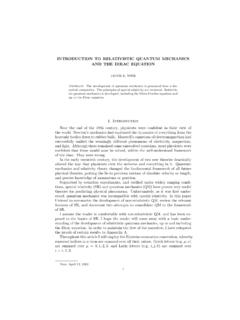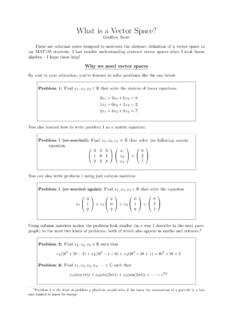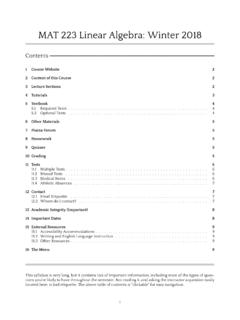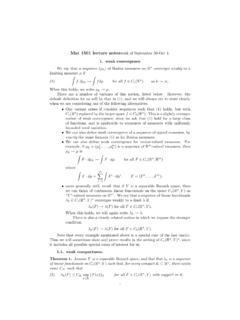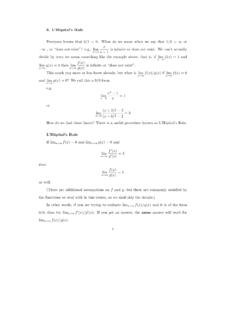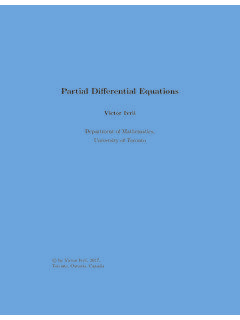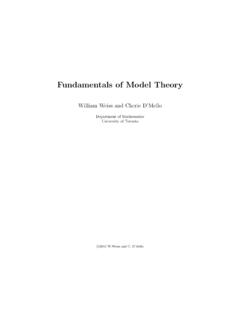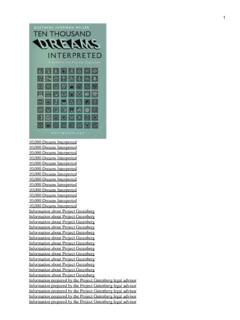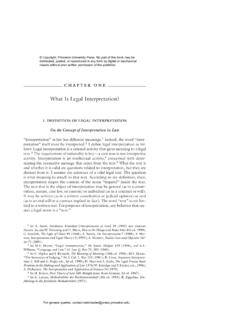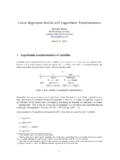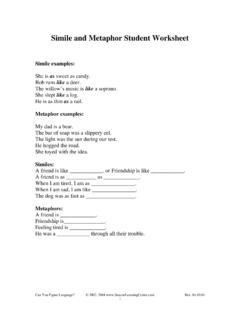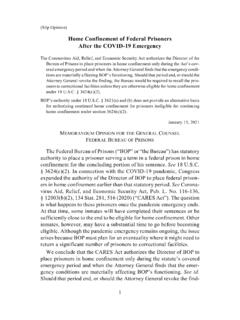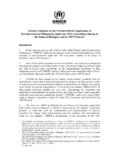Transcription of Bloom’s Taxonomy Interpreted for Mathematics
1 Bloom s Taxonomy Interpreted for MathematicsLindsey ShorserThis document contains a description of Bloom s Taxonomy , a educationaltool developed by Benjamin S. Bloom (1913-1999) that ranks the relative cogni-tive complexity of various educational objectives. This Taxonomy is often usedas an aid when create test questions and assignments. Following the description,you will find Lindsey Shorser s interpretation of Bloom s Taxonomy in the con-text of mathematical understanding with examples drawn from undergraduatelevel s Taxonomy of Cognitive Skills: Knowledge - retention of terminology, facts, conventions, methodologies,structures, principles, etc. Comprehension - grasping of meaning, translation, extrapolation, inter-pretation of facts, making comparisons, etc. Application - problem solving, usage of information in a new way Analysis - making inferences and supporting them with evidence, identi-fication of patterns Synthesis - derivation of abstract relations, prediction, generalization, cre-ation of new ideas Evaluation - judgement of validity, usage of a set of criteria to make con-clusions, discriminationQuestions that encourage each of these skills often begin with: Knowledge: List, define, describe, show, name, what, when, etc.
2 Comprehension: Summarize, compare and contrast, estimate, discuss, etc. Application: Apply, calculate, complete, show, solve, modify, etc. Analysis: Separate, arrange, classify, explain, etc. Synthesis: Integrate, modify, substitute, design, create, What , formu-late, generalize, prepare, etc. Evaluation: Assess, rank, test, explain, discriminate, support, Taxonomy can be used to invent test or assignment questions. Here is aninterpretation of each cognitive skill in a mathematical context. The examplequestions are aimed for introductory level, single-variable calculus students, butcould be modified to apply to other :Questions include State the definition , State the theorem ,or Use the specified method. , Take the derivative of the following rational function using quotient :Questions ask the student to use definitions or methodsto calculate , Find the slope of the tangent line to the following function at a given :Questions which require the usage of more than one defini-tion, theorem, and/or , Find the derivative of the following implicitly defined function.
3 (Thisquestion could be used to test logarithmic differentiation as well, for instance)Analysis:Questions require the student to identify the appropriate theo-rem and use it to arrive at the given conclusion or classification. Alternatively,these questions can provide a scenario and ask the student to generate a certaintype of , Letf(x)be a fourth-degree polynomial. How many roots canf(x)have? :Questions are similar to Analysis questions, but the conclusionto be reached by the student is an algorithm for solving the given also includes questions which ask the student to develop their own classi-fication , optimization word problems where student generates the function to :Questions are similar to Synthesis questions, except the stu-dent is required to make judgements about which information should be , related rate word problem where student decides which formulae are to beused and which of the given numbers are constants or instantaneous.


